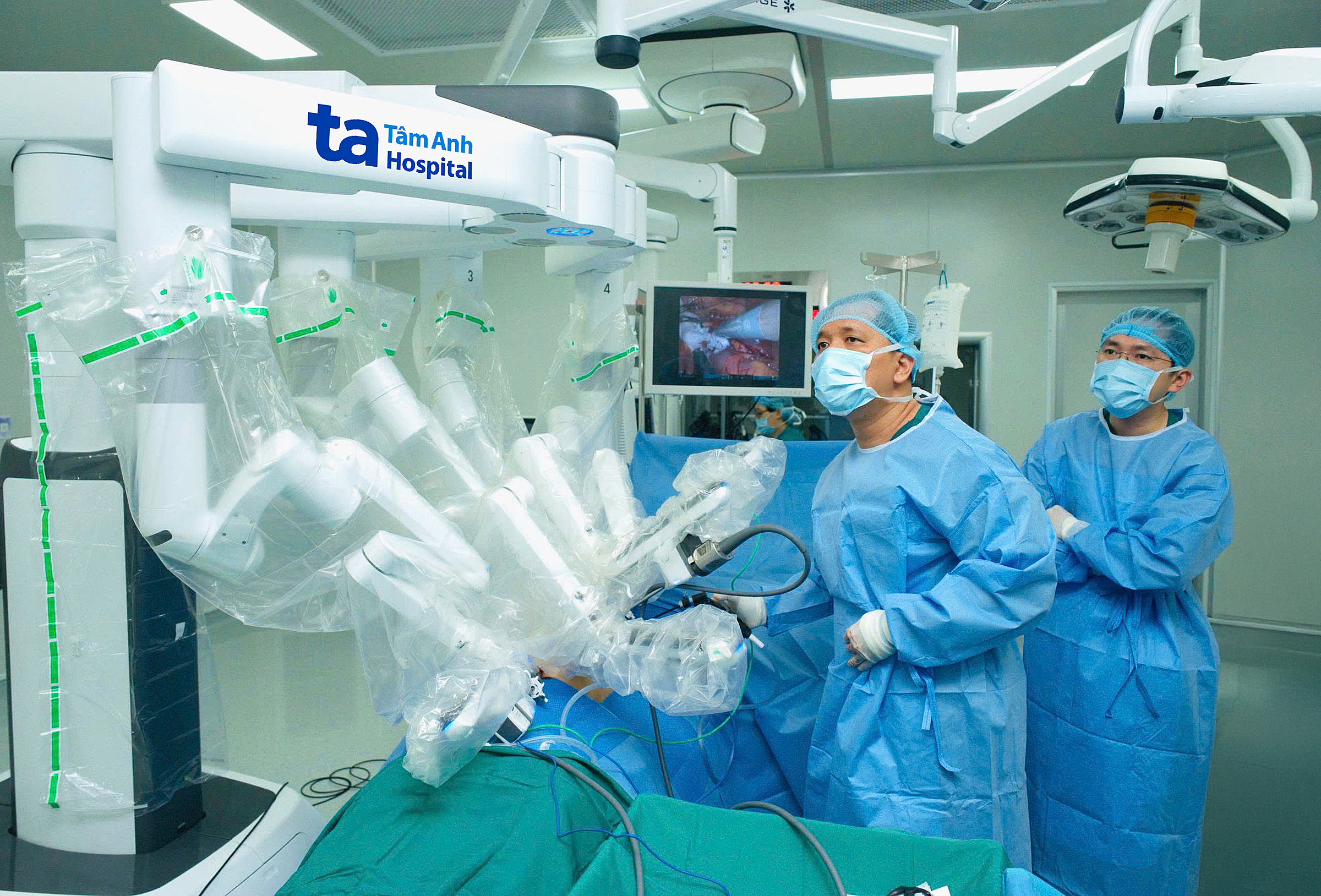The tumor, initially 17 mm, was discovered 4 years ago. Mai had been undergoing regular check-ups every 6 months. Last week, during a general health check at Tam Anh General Hospital in Ho Chi Minh City, the tumor was found to have grown to 25 mm. A CT scan showed it absorbing contrast dye, leading doctors to suspect RCC (renal cell carcinoma), the most common type of kidney cancer.
Associate Professor Doctor Vu Le Chuyen, Director of the Center for Urology-Nephrology-Andrology, and his team performed a robot-assisted laparoscopic surgery using the Da Vinci Xi system to completely remove the cancerous tumor.
 |
Associate Professor Chuyen (left) operating the Da Vinci Xi robot to remove the tumor located in the center of Mai's right kidney. Photo: Tam Anh General Hospital |
According to Doctor Phan Huynh Tien Dat, kidney tumors located at the upper or lower pole of the kidney and smaller than 4 cm are typically easier to remove while preserving the kidney. However, Mai's tumor was located in the center of the kidney, close to the hilum (where major blood vessels enter and exit). This location made it crucial to avoid damaging the renal pelvis and calyces, preventing bleeding during surgery and urine leakage afterward. The tumor's depth also presented a challenge, increasing the risk of incomplete removal and recurrence.
The Da Vinci Xi robot's magnified camera allowed the surgeons to visualize the deep, narrow, and hidden areas within the renal hilum. The team accessed the kidney from the lower pole, carefully exposing the renal vein and artery. They then navigated towards the tumor and used the robot to precisely excise it without causing bleeding or damaging the renal pelvis and calyces, successfully preserving the kidney. The pathology report confirmed the initial diagnosis of cancer.
Three days post-surgery, Mai recovered and resumed normal eating. With the tumor removed, she is now cancer-free and requires no further treatment. She will have follow-up appointments every 3 months during the first year to monitor for complications and recurrence.
 |
The Da Vinci Xi robot enables surgeons to access deep, narrow, and hidden areas within the renal hilum. Photo: Tam Anh General Hospital |
Early-stage RCC often presents no symptoms and is usually detected through CT or MRI scans. Some individuals may experience lower back pain, blood in their urine, fever, persistent fatigue, or significant weight loss. The exact cause of RCC remains unknown, but risk factors include smoking, obesity, high blood pressure, exposure to carcinogens, and a family history of kidney cancer.
Doctor Dat emphasized that early detection significantly improves the chances of a complete cure, with a 95% 5-year survival rate. He recommends regular health check-ups every 6-12 months for early diagnosis and treatment. In the early stages, surgery to remove the tumor while preserving the kidney, or removing the entire kidney depending on the patient's condition, is the most effective treatment compared to radiation or chemotherapy, especially for those under 40.
Ha Thanh
*The patient's name has been changed.












